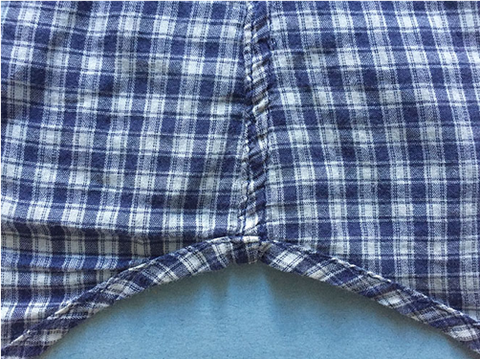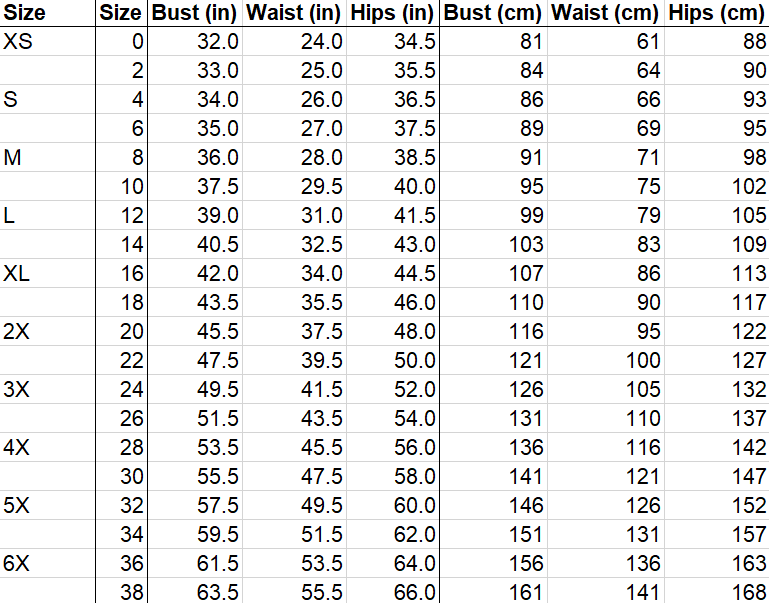The Ethics of Fashion
Today we’re going to take a look at the world of Ethical Fashion. I’m not talking about dresses made from duct tape or jackets made from recycled plastics. Eco-friendly fashion is important, but there are a lot more issues to address in the fashion industry.
Behind the scenes of runway shows and JCPenney sales lurk disturbing facts about the ethical and environmental costs of Fast Fashion. Fast Fashion is the industry of mass-producing high fashion and designer piece look-alikes. We’ve all seen the fashion magazine comparisons of the $400 designer dress to the $35 dress sold at H&M. The H&M dress is Fast Fashion. Think Forever 21 and Macy’s for Fast Fashion.

The kind of fashion that the world has started to consume in recent decades sacrifices safe, fair, and quality practices for cheap clothing that’s readily available. And as companies compete to give their customers lower and lower prices, the ways that they do this become more and more unethical. Let me first tell you what Ethical Fashion means. Ethical Fashion describes ethical practices in each area of the fashion industry: fashion design, production, retail, and purchasing. More specifically, it covers the ethics of working conditions, exploitation, fair trade, sustainable production, the environment, and animal welfare.
The ways in which companies cut corners to keep prices low and production quick are some of the most problematic. First, labor costs are kept low because of production companies that hire workers and exploit them. These employees, many of whom are children, are subject to violence and abuse in the form of forced overtime, cramped, dangerous, and unclean surroundings, and little pay. Production companies used by American Fast Fashion companies are often located in poor countries around the world since these countries are the most likely to have the cheapest labor. Since there are no labor laws put in place by the government -- whether local or national -- companies can pay them as little as they want, while making them work in tiny, dark spaces that often have few or no safety precautions.




In Bangladesh in November 2012, a fire in a garment factory killed 112 workers, most of whom were trapped due to small or blocked fire escapes. Five months later, another tragedy struck when a building housing garment production collapsed, killing 1,134 workers. The day before the building collapsed, people had been evacuated after cracks were found. But the next day, factory management made workers return to work because shipping deadlines were quickly approaching. Many initiatives aiming to protect workers health and safety were started after these two disasters exposed how awful working conditions really were, but ultimately, these initiatives lost steam and don’t do enough. Companies continue to find ways to cut corners today, and fires and building collapses continue, as well as poor working conditions and low wages.
Along with unethical labor, practices that hurt the environment are also extremely common in the fashion industry, particularly in the farming of inorganic cotton. On the cotton farms, insecticides and pesticides are applied to cotton fields to produce abundant supplies of cotton. But both types of chemicals are dangerous for the environment and harmful to farmers. More chemicals are added later on to treat the textiles to soften and dye them. Since these are put on once the fabric is made, they can be transferred to the skin of the people wearing these clothes. As shown in the two infographics below, organic cotton is a much more eco-friendly and people-friendly fabric to buy.


Textile-growing practices themselves are considered unsustainable because they do so much damage to the immediate and overall environment. Since so much water is needed for producing and dyeing cotton, lakes have actually been observed to shrink when cotton production goes on near them. Animals are farmed as well to supply fur and leather to the fashion industry, which have always been popular and seen as signs of high status. In a similar vein, the production of rayon, an artificial fabric made out of wood pulp, has resulted in many old-growth forests being cut down. Nylon-manufacturing creates greenhouse gases, and synthetic fabrics aren’t biodegradable, meaning they’ll last decades in the ground before decomposing. The factories where garments are produced create carbon monoxide and sulfur dioxide, both of which contribute to air pollution.
Ultimately, all of these practices are still widely used by companies who know the environmental and social costs. But because they help lower prices, attract customers, and maximize profits, the costs are ignored. But these practices also result in cheap, low-quality clothes which are seen as disposable by consumers: once they go out of style (usually within a year or two), or get a rip in them, consumers throw them out since they weren’t that expensive or great in the first place. This means garments end up in incinerators and landfills, contributing to the environmental damage done by the industry. Throwing out clothes soon after buying them also means having to buy more clothes, which then feeds back into the vicious cycle of unethical and unsustainable production.

So now that we know all of this, what can we actually do about it? If you’re lucky enough to work in the fashion industry, you might be able to take direct action in the form of using eco-friendly fabrics and production companies with enforced labor laws and maybe even a labor union. But if you’re not, like me, let’s walk through some other, more indirect ways to create better shopping and living habits that will follow through on our desire to protect and respect not only our environment but humanity, too.
There’s not much that we can do about how labor is used in fashion, but as customers, we have the most important thing in the fashion industry: our money. What people are buying tells the fashion industry what the trends are, and companies then start to make “trendy” clothes in order to make money. Using our money to support companies that focus on having ethical practices is the most powerful move we can make. Ideally, we start only buying clothes from eco-friendly companies, companies that support and advocate for their workers, and companies that make high-quality, durable garments that last for years (a short list of such companies can be found below). Unfortunately, better ethics comes at a cost. Clothes from these companies can be extremely expensive, and for those of us who don’t have a champagne budget or even the money to invest in a few long-term pieces, there are plenty of other ways to do our part.
One of the easiest issues to tackle is reducing clothing waste. The first and most obvious step is to take care of the clothes you already own. Mending them when they rip, washing them as little as possible to keep them in good shape, and folding them or hanging them up as needed will make them last longer. You’ll have to replace clothes less often, which means spending less money and saving clothes from the landfill. Another easy step to take is to buy second-hand or vintage clothes. This saves more clothes from the landfill and you can often find some really interesting and unique pieces in the deep recesses of Plato’s Closet corners.

Keeping your closet streamlined and filled with things you love 100% is another way to keep from throwing out clothes. If you’re like me, when you’re making those fitting room decisions about what to buy, you tend to err on the side of “What the heck, I can always return it.” But most of the time, we don’t return it and end up throwing it away within a year, only to buy another so-so piece. But the better thing to do is to say no. Don’t let your mind convince you that you’ll wear it if you know you won’t. And if you’re only going to wear it a couple times, then it’s not worth the money. The more you love a piece of clothing, the longer you’ll keep it and the more use you’ll get out of it. You’ll only throw it out when it is past the point of no return or it no longer fits, and this will keep you from buying a bunch of new clothes every month or two and throwing out cheap old clothes.
The last way to be an ethical fashionista that I’m going to talk about is buying high-quality, durable garments that will last you years. This means not shopping at Fast Fashion places, because of their questionable ethics, not to mention we’ve all seen how long Forever 21 and Macy’s clothes last. A link to Anuschka Rees’s cheat sheet detailing how to assess a garment’s quality is below, but I’ll include a few basics for those of you who don’t read it. Anuschka defines quality with a few points: 1) long-lasting, 2) comfortable, feels good on the skin, and easy to move in, 3) keep their shape and fit our body’s shape, 4) made of fabric that doesn’t pill or fade, and 5) look high quality. The extra steps that manufacturers have to take to make a piece high quality take time and money (read: money and money), which is why so many brands don’t bother. But a high price doesn’t always mean high quality, just like quality doesn’t have to be expensive.
For those of us who love online shopping, it might be necessary to cut down on buying over the internet. Anuschka says quality can only truly be assessed in person. Each fabric has specific and objective qualities that distinguish high quality from low, which you can research and take note of for when you’re assessing a piece’s quality. The fabric should be suitable for the particular item, as well as for how, when, and where you will be wearing it. Seams should be straight and neat, with no stray threads or loose stitches. They should lie flat and patterns should line up at the seams so it looks like one piece of fabric. Anuschka goes over more parts of the garment to look at, including the tailoring, lining, and details, which you can read more about in the link to her cheat sheet below.
Bad Seam

vs. Good Seam

The clothing found in almost every store in the mall nowadays is considered Fast Fashion. That means that we, as customers, have to do better. We have to do more work to create ethical closets, but by taking these extra steps, we can support the companies that are trying to make the world a better place for everyone, and we can become fashion superheroes at the same time.
Written by Miranda Marnik-Said
All sources, picture credits, and additional links will be in the comments below













































































































Ethical brands Cost of Least Expensive Top__ Sizes
Reformation: $28 XS – 3X
Elizabeth Suzann: $95 OS Minus – OS Plus
Cuyana: $125 XS – L
Stella McCartney: $173 (1/2 off full price) 34 – 44 (varies)
Honest by: $119 34 – 42, XS – XL
Everlane: $55 00 – 16
People Tree: $49 8 – 16
Anastasia Chatzka: $75 2-26
Additional Ethical Fashion Resources to Check Out:
Anuschka Rees’s Quality of Garments Cheat Sheet https://anuschkarees.com/blog/2014/05/04/how-to-assess-the-quality-of-garments-a-beginners-guide-cheat-sheet/
Behind the Barcode
https://baptistworldaid.org.au/faith-in-action/behind-the-barcode/
Ethical Fashion Forum
http://www.ethicalfashionforum.com/
GreenPeace
https://www.greenpeace.org/usa/?s=fashion
Pictures:
Get the look for less: https://s-media-cache-ak0.pinimg.com/originals/68/40/95/684095d884b41329ee3e46c6514b2413.jpg
Benefits of organic cotton: https://www.organicfacts.net/wp-content/uploads/organiccottoninfo.jpg
Organic cotton vs. inorganic on the farm: https://static1.squarespace.com/static/56ed926c2eeb817a498e951e/t/594c207e3e00beae4df6106f/1498161356394/cottoned_on_infographic_new.jpg?format=750w
Garment production factories: https://media-us-west-motionelements.s3.amazonaws.com/m/s/155/1543338/a-0005.jpg
https://www.icij.org/sites/icij/files/620px-20140318_115823.jpg.jpg
https://theecologist.org/sites/default/files/styles/inline_l/public/NG_media/359085.jpg?itok=1kAe3w9d
https://www.wvi.org/sites/default/files/styles/large/public/DSC_7502cc.jpg?itok=s4CtD6OG
Differences in quality seams: http://www.theluxestrategist.com/wp-content/uploads/2017/12/quality_nili_lotan_shirt.jpg
Resources:
https://study.com/academy/lesson/textile-production-the-environment-impact-issues.html
http://theconversation.com/five-years-after-deadly-factory-fire-bangladeshs-garment-workers-are-still-vulnerable-88027
http://www.ethicalfashionforum.com/the-issues/ethical-fashion